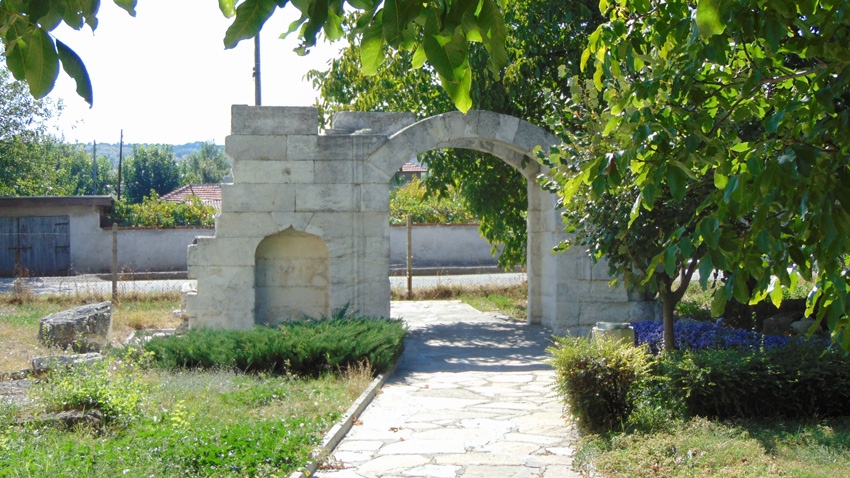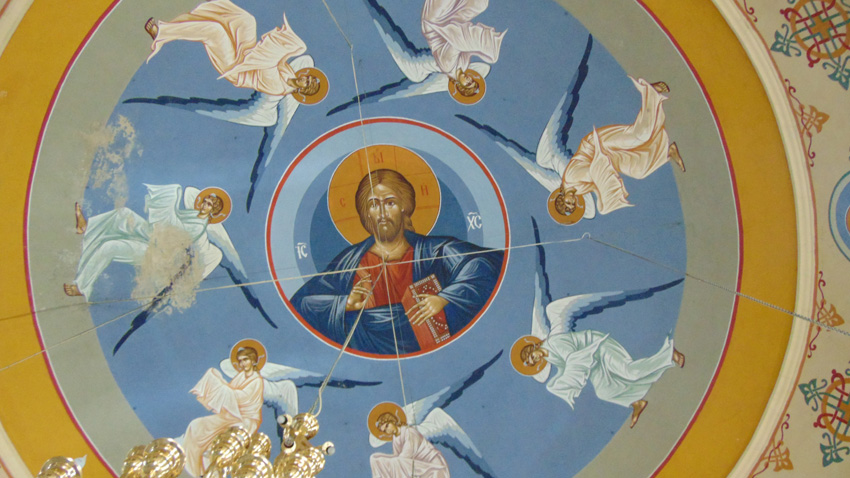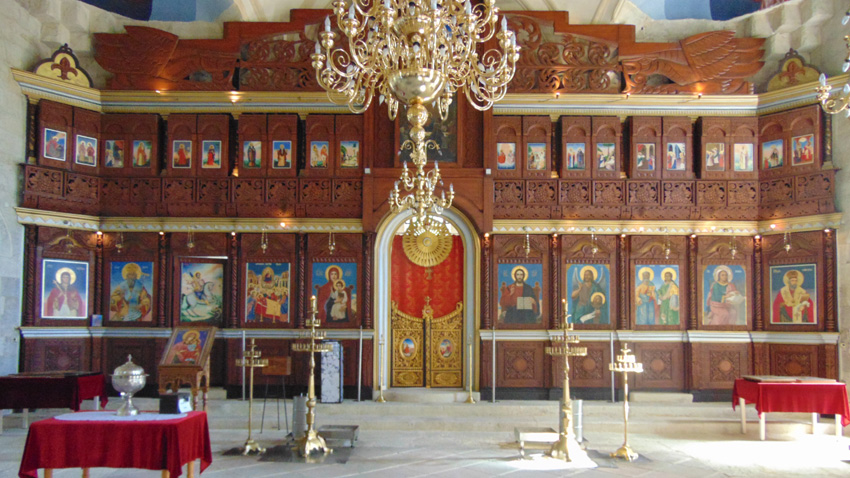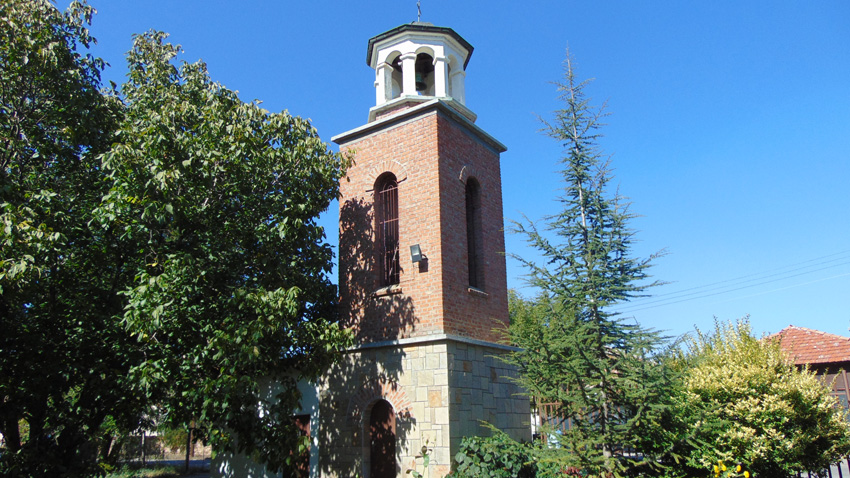The five centuries of Ottoman domination in the Balkans have left their imprint on the way of life and customs, as well as on the architecture in many towns and villages in the country. Many of the Christian temples were turned into mosques, and only rarely – mosques into churches. One such example of a mosque turned into a church is the Seven Saints (Sveti Sedmochislenitsi) church in Sofia which was a Muslim temple until 1900. It is also known as the “Black Mosque” because of its black minaret, made out of black granite from Mount Vitosha.

One of the buildings in Bulgaria that bears the marks of a mosque and of an Orthodox church at the same time is the Assumption church in Uzundjovo village near Haskovo. Its history is yet to be unraveled but there are many stories and legends about it. According to one, around the year 1593 the village church was destroyed and a mosque built in its place. It was part of a larger complex travellers to these parts used as a stopover. Unlike other mosques which face south towards Mecca, this one looks southeast. That is why it is said that its builder was a Christian who had hopes the village would one day be free. The mosque was built in such a way as to be easily turned into a Christian temple.

More about the temple’s history from Rossitsa Paskova, curator at the Assumption church:
“There was a church here as far back as ancient times. Then, when the Ottoman Turks came to our lands, it was destroyed. Because of the Uzundjovo fair, a caravanserai was built here with a mosque. In 1890 there were no Muslims left in the village and the mosque fell out of use, but Christians didn’t have a church. In 1900 the state gave this property back to the village. Interestingly, the Turkish government issued a decree permitting the mosque’s reconstruction into a Christian church and in 1906 this was done. The only architectural change was that the mosque was torn down and an altar built. In 2007 the church was fully restored. There was no room for frescoes on its walls, so stained glass was installed.”

The church iconostasis is the only iconostasis in the world depicting the Glagolitic alphabet. It is 9 meters high and 14 meters long. It was made by carpenter Darin Bozhkov who decided to use the Glagolitic letters because it was the script once used to bring the word of God to these lands. When he looked the premises over he found the church already had an old iconostasis, made around 1913-1914. He preserved some of its elements out of respect for the old masters. That is why the iconostasis is designed as a transition from the days of old to the present day. But there is one more thing that makes this church special – it has amazing acoustics. This is due to the fact it is shaped like a bell.

The name of the church is also significant, as for Haskovo and the surrounding area the Virgin Mary has a special significance. The town marks its patron saint’s day on 8 September – the feast of the nativity of Mary. In 2003 one of the world’s tallest statues of Virgin Mary was erected here – it is 31 meters tall. These two tourist sites, as well as the famed Thracian tomb in Alexandrovo village have made the region of Haskovo a popular religious tourism itinerary. Visitors coming to these parts from the country and abroad can see how many and different cultures and religions have existed side by side from antiquity down to our day.
English version: Milena Daynova
Photos: Wikipedia and Yoan KolevOn November 10, 1989, at a plenum of the Central Committee of the Bulgarian Communist Party, Todor Zhivkov was removed from the position of General Secretary - the highest position in the party and the state. What happened at the..
Archaeologists have discovered a very rare and valuable glass bottle in a 2nd-century tomb in the southern necropolis of the Roman colony Deultum near the village of Debelt (Southeastern Bulgaria). What makes it unique is that it depicts the myth of..
The Days of Croatian Archaeological Heritage, which will last until 8 November, begin today at the National Archaeological Institute with Museum at the Bulgarian Academy of Sciences (NAIM-BAS) in Sofia. The event is organised by the Croatian Embassy in..
The head of the statue of Tyche, the goddess of Philippopolis, has been discovered in the Episcopal Basilica in Plovdiv, said the head of the..

+359 2 9336 661
